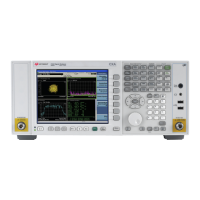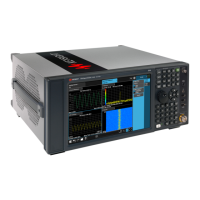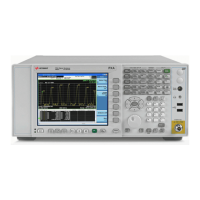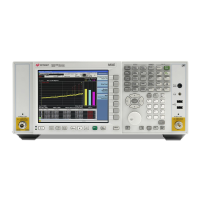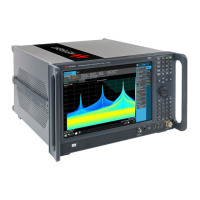195
Concepts
Trigger Concepts
Line triggering selects the line signal as the trigger. A new sweep/measurement
will start synchronized with the next cycle of the line voltage. Pressing this key,
when it is already selected, access the line trigger setup menu.
Press Trigger, Line.
6. Periodic Timer Triggering
This feature selects the internal periodic timer signal as the trigger. Trigger
occurrences are set by the Periodic Timer parameter, which is modified by the
Sync Source and Offset. Figure 15-2 shows the action of the periodic timer
trigger. Before reviewing the figure, we'll explain some uses for the periodic
trigger.
A common application is measuring periodic burst RF signals for which a trigger
signal is not easily available. For example, we might be measuring a TDMA
radio which bursts every 20 ms. Let's assume that the 20 ms period is very
consistent. Let's also assume that we do not have an external trigger source
available that is synchronized with the period, and that the signal-to-noise ratio of
the signal is not high enough to provide a clean RF burst trigger at all of the
analysis frequencies. For example, we might want to measure spurious
transmissions at an offset from the carrier that is larger than the bandwidth of the
RF burst trigger. In this application, we can set the Periodic Timer to a 20.00 ms
period and adjust the offset from that timer to position our trigger just where we
want it. If we find that the 20.00 ms is not exactly right, we can adjust the period
slightly to minimize the drift between the period timer and the signal to be
measured.
A second way to use this feature would be to use Sync Source temporarily,
instead of Offset. In this case, we might tune to the signal in a narrow span and
use the RF Burst trigger to synchronize the periodic timer. Then we would turn
the sync source off so that it would not mistrigger. Mistriggering can occur when
we are tuned so far away from the RF burst trigger that it is no longer reliable.
A third example would be to synchronize to a signal that has a reference time
element of much longer period than the period of interest. In some CDMA
applications, it is useful to look at signals with a short periodicity, by
synchronizing that periodicity to the “even-second clock” edge that happens
every two seconds. Thus, we could connect the even-second clock trigger to Ext1
and use then Ext1 as the sync source for the periodic timer.
The figure below illustrates this third example. The top trace represents the
even-second clock. It causes the periodic timer to synchronize with the leading
edge shown. The analyzer trigger occurs at a time delayed by the accumulated
offset from the period trigger event. The periodic timer continues to run, and
triggers continue to occur, with a periodicity determined by the analyzer time
base. The timer output (labeled “late event”) will drift away from its ideal time
due to imperfect matching between the time base of the signal being measured
and the time base of the analyzer, and also because of imperfect setting of the
period parameter. But the synchronization is restored on the next even-second
clock event. (“Accumulated offset” is described in the in the Offset function
section.)
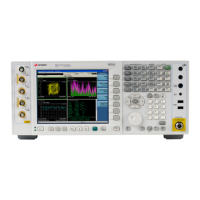
